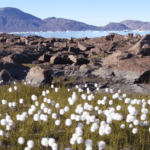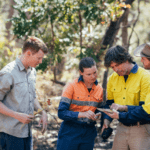It’s 6 o’clock in the evening and you have just sat down to eat dinner. Your phone begins to ring. You answer the call. Of course, it’s someone asking you to participate in a survey. At the same moment you have also received an email requesting you to fill out a questionnaire with the incentive to win an iPad.
These calls and emails are market research surveys looking to learn about YOU, their target market: who you are, what you like, what you don’t like, what you want, what you don’t want. Businesses do this to hone their products and services in order to maintain current customers and entice future ones.
The saying “know your audience” has been repeated over and over as a starting point for all science communication. A scientist’s audience can be considered as their target market, and research is their product or service. Most scientists can probably identify who their intended target markets are (e.g., fisheries management, pharmaceutical company, policymakers), but do we really know them? Do we communicate effectively with them? Are the products and services we are producing (i.e., research findings) of interest and of use to them?
Just like any other market researcher, scientists can use market surveys to obtain valuable information about their audiences; information that, if used effectively, can enhance science and the ways we share and communicate that science.
So, next time you are working on a science communication campaign, consider using market surveys to learn more about your audience and better understand how they communicate.
This post focuses on science communication as an element of a study’s design, and how the findings of such design can help improve your choices of communication.
Integrating natural science and social science to better understand your audience
During my M.Sc. at Carleton University, I undertook a thesis project with Dr. Steven Cooke that was 50% biology focused (understanding the effects of fisheries capture-and-release on sockeye salmon migration in British Columbia’s Fraser River) and 50% social science focused (compiling the perspectives of aboriginal fishers and recreational anglers).
For the social aspect of my thesis, I wanted to assess the awareness of recreational and aboriginal fishers to the best catch-and-release practices for Pacific salmon, and how they acquired this knowledge. I collaborated with an environmental economist, Dr. Murray Rudd and a social scientist, Dr. Nathan Young. Collaboration and working with experts in fields such as social science or marketing is essential for a good survey design. To learn more about my target audience (recreational and aboriginal fishers), I worked to develop a market survey. When developing a survey of any kind, it is important to remember that proper questionnaire design and implementation is a skill. We cannot simply ask a bunch of questions and throw it on SurveyMonkey or FluidSurveys as there are many nuances to questionnaire design. If an individual is untrained in survey design, the collected data can be misleading or biased; reading sources like John Creswell’s book on mixed methods research or other textbooks can help with better survey design and interpretation of results.
As a trained fish biologist, it was a very different experience interacting primarily with humans versus fishes for my thesis. Instead of being in the water catching and tagging fish, I was wandering the river banks finding the opportune moment to speak to an angler. Instead of a fish ID33 being the data point, it was Joe Smith from Chilliwack.
I asked questions such as:
“Where would you go to find more information about appropriate handling and release techniques?”
“What is the best way for Department of Fisheries and Oceans to distribute this kind of information?”
What did the survey results reveal about communicating research findings to our target audience?
I interviewed around 70 anglers on this topic. About half of my sampled anglers get information about best handling and release techniques from the internet (55%). About 34% of anglers get their information through word-of-mouth and within their social network (e.g., other anglers, tackle shops, family and friends, local fishing clubs). The rest of the anglers get information through printings (magazines, books, handouts) or media (videos, TV, radio).
What’s interesting is that when I asked them how they’d like to get the information, only 12% said the internet. This tells us that our target audience is not getting information about catch-and-release best practices in their preferred communication channel. Without communicating directly with our target audience, in this case via a survey, we would not have learned this valuable information and would not have the opportunity to better share research findings with those we want to reach more. In this case, these types of data are important for scientists, managers, and practitioners working towards raising awareness of best catch-and-release techniques to know and to consider when deciding where and how to communicate with target audiences.
Identifying groups within target markets
When I was 16, I worked at a clothing store. I was trained to approach and communicate with shoppers differently depending on what “behavioral” group they belonged to. For example, if someone looked like they read the clothing labels and asked what kind of material a sweater was made of, then they fell into the ethical shopper group who value quality and ethics of the merchandise, and I should focus my communication on the material of the clothing and where it was from. By knowing my audience (i.e., the shoppers), I was able to communicate about the product in a manner that connected with the customer.
Our audiences, as scientists, are as diverse as the shoppers at Old Navy. Identifying groups within our target audience can help us better understand our audience and enable more effective communication. There are a number of statistical approaches that can reveal groups in the data amassed by surveys (i.e., people who answered questions in similar ways). I used a latent-class model when analyzing the communication preferences of anglers. Three groups emerged from the data: 1) the traditional group who prefer to use “old school” methods like printed brochures and talking to people in person rather than surfing the internet; 2) the investigative group who are keen on looking up information for themselves using various methods, and 3) the networking group who are the social butterflies and learn most of what they know from chatting with other anglers, friends, tackle shop staff, etc. Again, this type of information is valuable to fisheries managers looking to effectively use different media resources to communicate to fishers.
Same product, different consumers
After diving into the human dimensions of fisheries, I quickly learned the benefits of integrating social science approaches into my research, and how this can improve the impacts of my research. Today, I am working on my PhD thesis and exploring the many questions that still remain on how to understand our science consumers. This time, I am doing “market research” on fisheries managers rather than anglers. I have been sitting down with members of this group of consumers for an hour at a time to chat about how to improve our product (i.e., research), whether the forms of our output (such as our research questions and design) is relevant or useful for them and how to best get it to them in the way they need it (e.g., workshops, conferences, social media, briefings). It is very difficult to take an already-made product and sell it if this product isn’t needed, isn’t relevant, or cannot be used by the consumers. Know your audience before you design your study. Include your audience in your study design and you will come out with a useful, relevant product that your consumers will buy into.




